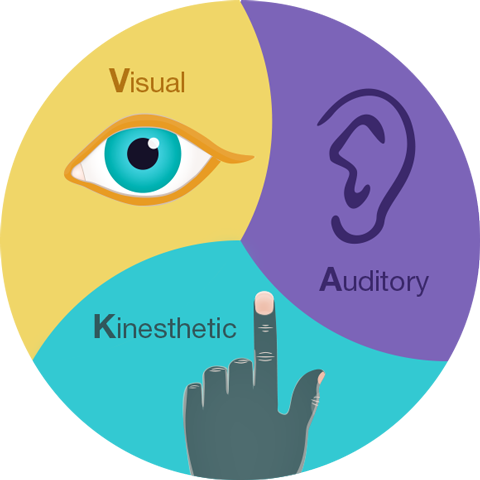
Some students will easily learn by watching a short video clip while others will need a second activity – say a discussion – for the concept to sink in. This adds spice and vitality to the lesson if one activity fails to get the message across, the next one might. When planning a lesson, a simple trick is to incorporate one visual, one auditory and one kinaesthetic activity. In other words, it is a simple and effective way of adding variety to classroom activities. VAK serves as a reminder that students respond to content, resources and activities in different ways – it is a differentiation tool. The answer is quite simple and not surprising. Why do teachers persist with models such as VAK when research shows that they are effectively no more than a fairy tale? Notwithstanding these findings, teachers continue to talk about and use learning styles as part of their practice. Learning styles are no more than a preference there is no academic benefit (at least no measurable one) to be gained from designing programs around learning styles even if it were possible to accurately determine a person’s ‘true’ learning style. ii Students who claim to be visual learners do not remember visual images any more than students who claim to be tactile learners or auditory learners. While teachers continue to refer to learning styles, research continues to show that learning styles do not always stack up. Hint: Why is it that the same people who hated history at school will often sit and watch endless hours of YouTube videos about the exact same subject? Could it be learning styles? The concept of learning styles has spread like wildfire in recent decades probably due to VAK’s simplicity and the increased popularity of terms like differentiated instruction and student-centred pedagogy. With the plethora of social media and online technologies, there is an argument that people now tend to be more visual learners due to sheer exposure to visual media compared to the past. The main premise behind learning styles is that not everyone learns in the same way: some may prefer to watch a video or look at diagrams and images (visual learners), others may prefer to learn in a social context by listening and interacting with others (auditory learners), and finally other students will prefer to touch, feel and ‘do’ something (kinaesthetic/tactile learners).

VAK is an acronym for Visual, Auditory and Kinaesthetic/tactile, and it is the dominant learning style model used by teachers. i While there are many different learning style models, VAK is by far the most well-known. The concept of learning styles has been a hot topic in education circles since Walter Burke Barbe and his colleagues published the VAK learning styles several decades ago. This means that 2 students at opposite ends of the performance spectrum can (and often have) the same preferred learning style. Learning styles is a type of differentiated instruction strategy that categorises students not by ability levels but into one or more categories of ‘preferred’ ways of learning. Learning styles – categories of preferred methods of learning: auditory, visual and kinaesthetic. Learning styles A guide for classroom teachers, teacher aides and students

Certificate III & IV in School Based Education Support in WA.Teacher aide courses in South Australia.Teacher aide courses in New South Wales.Teacher aide courses in Western Australia.Teacher aide certificates and qualifications.A review of the academic literature (literature review).Should you enrol in an online teacher aide course?.

What is an integrated course? And why it matters.CHC40213 Certificate IV in Education Support.CHC30213 Certificate III in Education Support.CHC40221 Certificate IV in School Based Education Support.CHC30221 Certificate III in School Based Education Support.


 0 kommentar(er)
0 kommentar(er)
